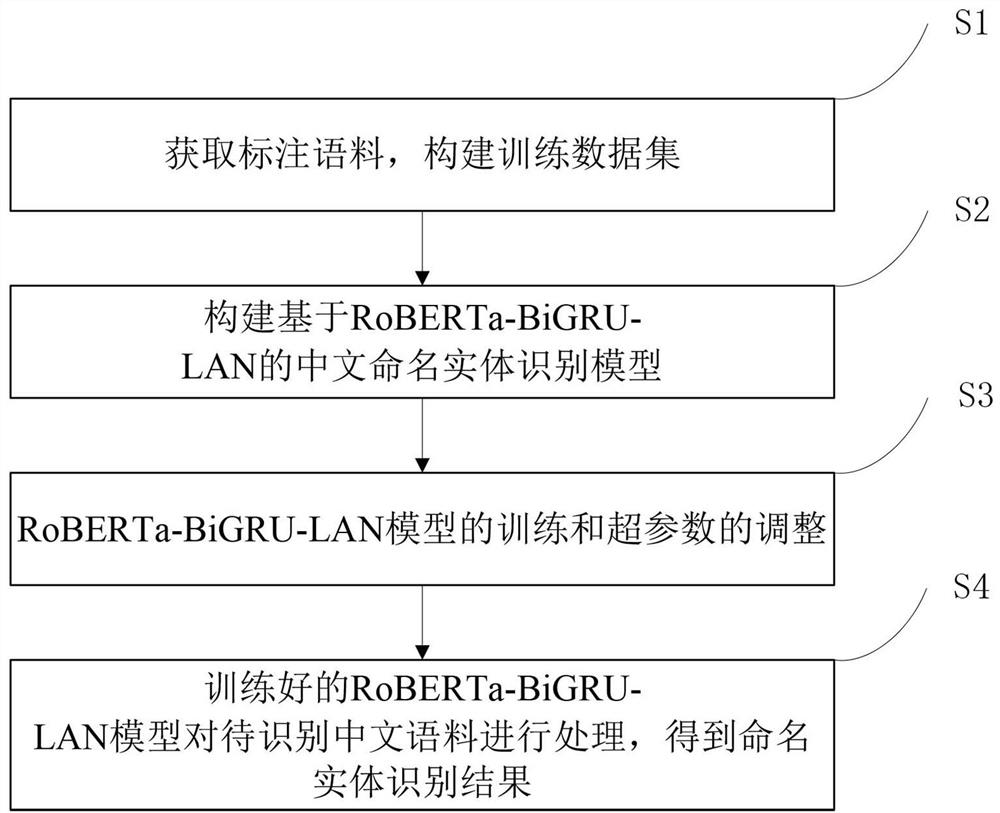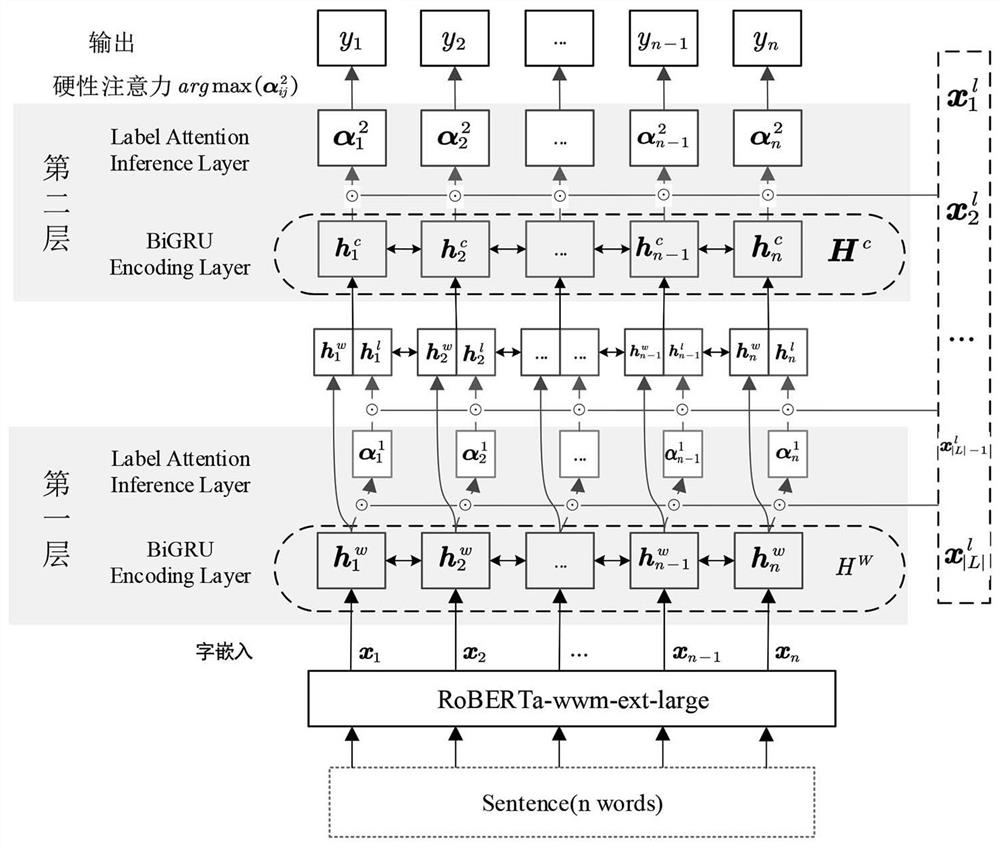Chinese named entity identification method and Chinese named entity identification device based on RoBERTa-BiGRU-LAN model
A named entity recognition, roberta-bigru-lan technology, applied in neural learning methods, biological neural network models, instruments, etc., can solve the problems of high model complexity, insufficient training time, small training data sets, etc., to reduce the number of models parameters, speed up model convergence, and improve accuracy
- Summary
- Abstract
- Description
- Claims
- Application Information
AI Technical Summary
Problems solved by technology
Method used
Image
Examples
Embodiment Construction
[0050] In order to make the purpose, technical solutions and advantages of the embodiments of the present invention clearer, the technical solutions in the embodiments of the present invention will be clearly and completely described below in conjunction with the drawings in the embodiments of the present invention. Obviously, the described embodiments It is a part of the embodiments of the present invention, but not all of them. Based on the embodiments of the present invention, all other embodiments obtained by those of ordinary skill in the art without creative work belong to the protection of the present invention. scope.
[0051] Such as figure 1 As shown, the Chinese named entity recognition method based on the RoBERTa-BiGRU-LAN model of the present embodiment includes the following steps:
[0052] Step S1, obtain the labeled corpus, and build a training data set; specifically include the following:
[0053] Step S11, the original sentence is segmented using a word seg...
PUM
 Login to View More
Login to View More Abstract
Description
Claims
Application Information
 Login to View More
Login to View More - R&D
- Intellectual Property
- Life Sciences
- Materials
- Tech Scout
- Unparalleled Data Quality
- Higher Quality Content
- 60% Fewer Hallucinations
Browse by: Latest US Patents, China's latest patents, Technical Efficacy Thesaurus, Application Domain, Technology Topic, Popular Technical Reports.
© 2025 PatSnap. All rights reserved.Legal|Privacy policy|Modern Slavery Act Transparency Statement|Sitemap|About US| Contact US: help@patsnap.com



